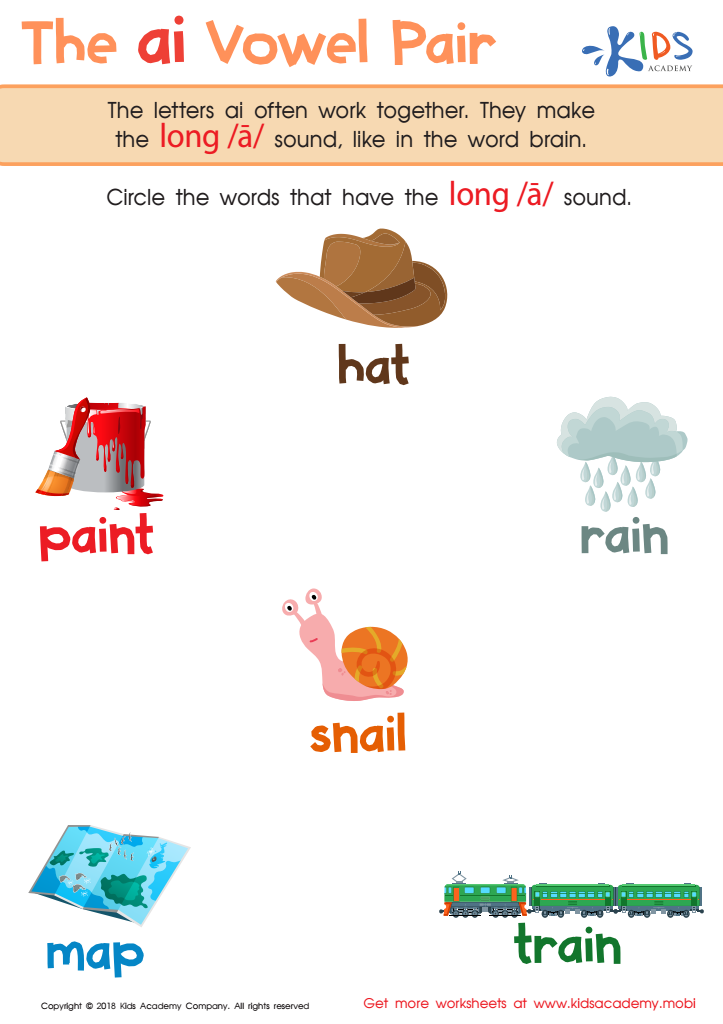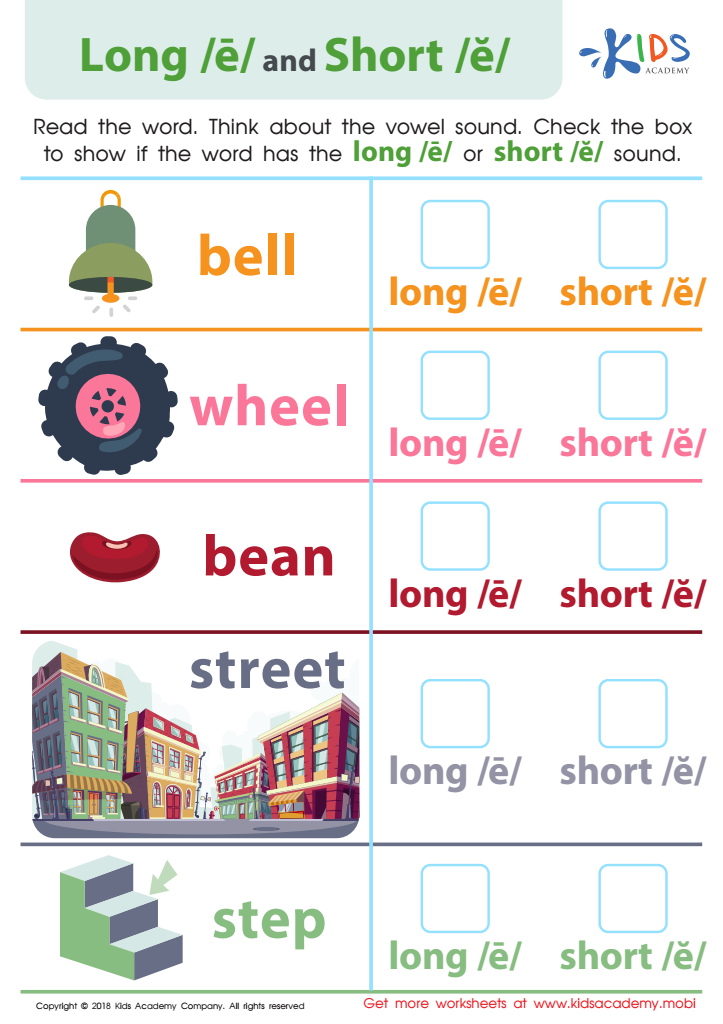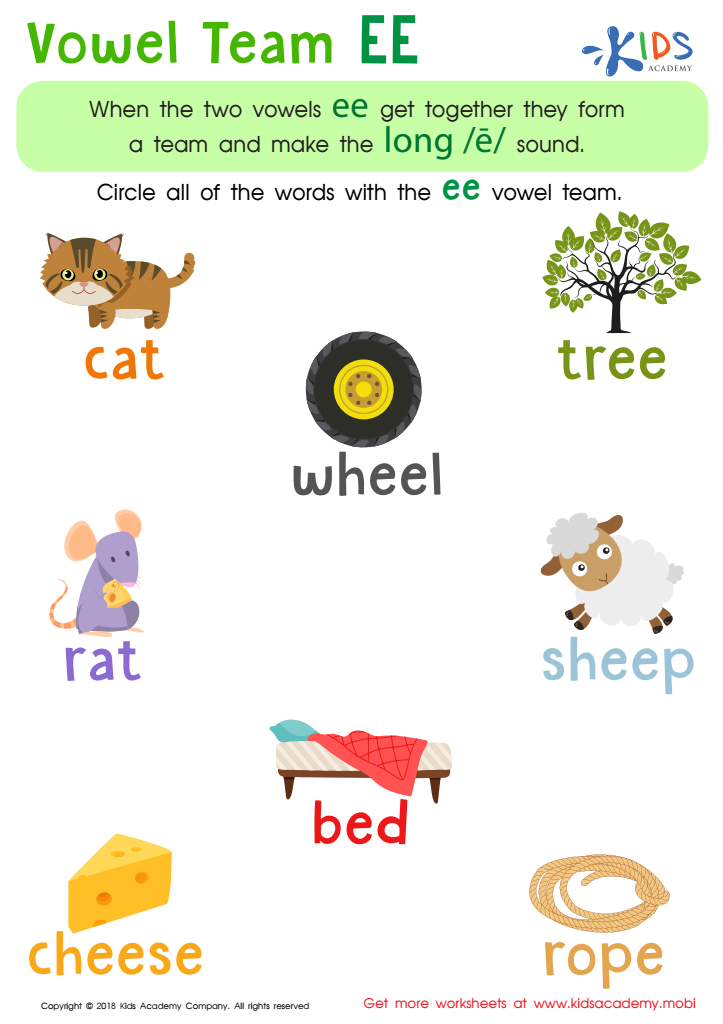Normal Vowel Diphthongs Worksheets for Ages 4-9
25 filtered results
-
From - To
Introduce your child to the captivating world of vowel diphthongs with our specially designed worksheets for ages 4-9! These engaging resources help young learners recognize and practice common vowel combinations, laying a strong foundation for reading and writing skills. Our Normal Vowel Diphthongs Worksheets feature colorful illustrations and interactive activities that make learning fun and effective. Children will enhance their phonetic awareness, boost vocabulary, and improve pronunciation as they explore different vowel sounds through play. Perfect for classroom use or at-home learning, these worksheets are an invaluable tool for nurturing your child’s linguistic development. Start the journey to literacy today!


Reading: Long O and Short O Sounds Worksheet


Reading: Long I and IE Worksheet


The AI Vowel Pair Worksheet


EW Words Worksheet


Reading: OA or OW Worksheet


Puss in Boots: OO Sound Worksheet


Reading: Long O Digraphs Worksheet


Vowel Diphthongs OI OY Worksheet


Which's the OA Word? Worksheet


Is It EE, EA, or AY? Worksheet


Reading: AI Vowel Team Worksheet


Reading: Long E and Short E Worksheet


What Sounds Like Float? Worksheet


The AI Tree Worksheet


OUGH as in Bought Worksheet


Vowel team ai Worksheet


Hungry Caterpillar Maze Worksheet


Reading: AW and AU Words Worksheet


Reading: EA and EE Worksheet


Reading: Vowel Team EE Worksheet


Reading: OI and OY Worksheet


Reading: Shoot for the Moon Worksheet


Reading: Y as Long I Worksheet


OU and OW Words Worksheet
Normal vowel diphthongs are essential for children aged 4-9 as they significantly contribute to literacy development and speech clarity. Understanding diphthongs—combinations of two vowel sounds that glide into one another—enhances phonemic awareness, which is crucial for reading and spelling. When children recognize and produce diphthongs correctly, their overall language skills improve, enabling them to decode more complex words.
For parents and teachers, fostering awareness of diphthongs can prevent future reading difficulties, as many high-frequency words contain these sounds. Activities that encourage practice with diphthongs—through rhymes, songs, and games—make learning fun and engaging, which is particularly beneficial for young learners who often thrive in interactive environments.
Additionally, highlighting diphthong usage helps children better articulate their speech, enhancing communication skills essential for social interactions in their formative years. Encouraging exploration of phonics in this sound context prepares students for academic success and builds a foundation for more advanced language concepts in the future.
In summary, nurturing recognition of normal vowel diphthongs empowers children with vital phonetic skills, supports literacy development, and strengthens articulation, making it a key focus for both parents and educators.

 Assign to My Students
Assign to My Students
















